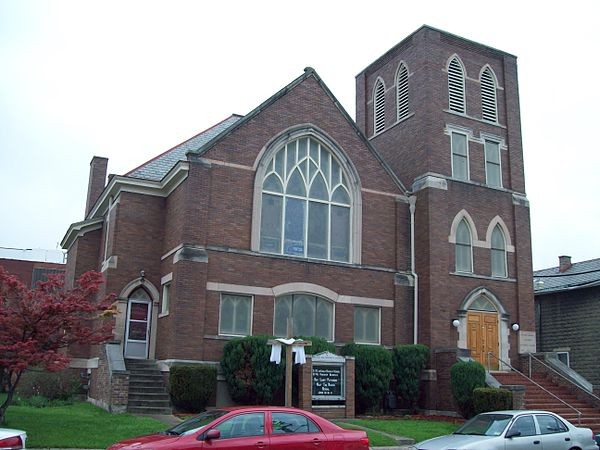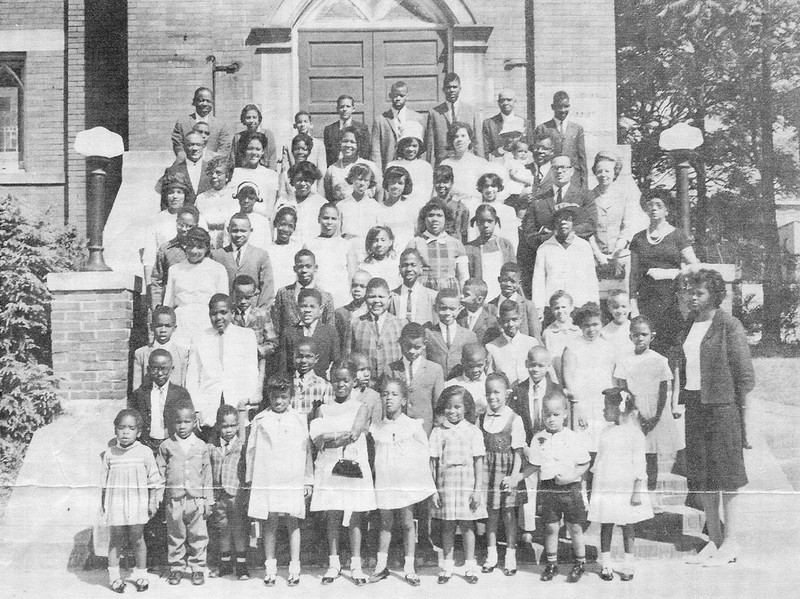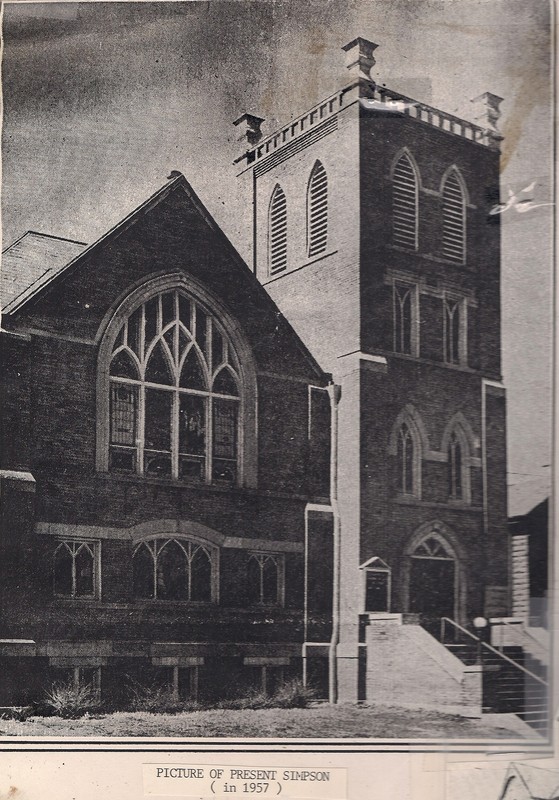Simpson Memorial United Methodist Church
Introduction
Text-to-speech Audio
Images
Simpson Memorial UMC today.

undated Black and white photo of Simpson UMC congregation during segregation period.

up-close undated Black and white shot of Simpson UMC

Backstory and Context
Text-to-speech Audio
The Simpson Memorial United Methodist Church is a symbol of African American culture in “The Block” historic district of Charleston, West Virginia. The church was one of many significant landmarks in the area, and is only one of five buildings remaining that represent the era of development in this once African American community. Simpson ‘s congregation was established and survived the era of segregation in the Methodist church. When Methodism reorganized and combined the churches of the Methodist Episcopal, the Methodist Episcopal South, and the Methodist Protestant Church in 1939, Simpson remained and dropped Episcopal from their name. The first past of Simpson under the new union of the Methodist church was Herbert A. Green. During the era of desegregation, Simpson was moved from the Washington Conference and welcomed into the West Virginia Conference. The Simpson congregation added United Methodist to their name in 1969 after the union of the West Virginia Conference, the former Methodist and Evangelical United Brethren Churches, and a section of the Evangelical United Brethren Virginia Conference. Simpson was the only African American United Methodist Church in Charleston, WV, and followed the tradition of European liturgy.
The earliest records of the Simpson congregation are from the Civil War era, in 1865. Services were held in the basement of a white church, Asbury Methodist Church, under a white minister. The Asbury church was located between Summers and Laidley Streets. Simpson was formed under the African American Washington Conference of the Methodist church, which was established in 1864. The Washington Conference sent Reverend C. O. Fisher to be Simpson’s first minister in 1866, and he preached in the basement of the Asbury Church until he left the congregation in 1869. Also in 1869, Simpson moved to a building on Quarrier Street, and had a large enough congregation to establish a church of their own in 1870 along Quarrier and Dickinson Streets. In 1887, the a frame structured church caught fire and was destroyed. What was left of the church was razed, and a new church was built in the same spot in 1888 and was said to be the most outstanding Black church in the Washington Conference. Also in 1888, Simpson was officially named Simpson Methodist Episcopal Church to honor Bishop Simpson.
In 1914, Simpson sold the church they had established along Quarrier and Dickinson Streets, and used that money to purchase a lot on Shrewsbury Street. A church with Gothic styled architecture was built on the lot, and is still serving the Charleston community today. The Simpson congregation once again suffered a fire in 1988 which destroyed the stained glass window that was displayed on the front of the church. The smoke and water damage caused to the sanctuary was repaired and restored, and the stained glass window was recreated. Simpson was the only African American Church in “The Block” Historic District until the 1950s, and has developed along with the neighborhood. Simpson United Methodist Church was placed on the National Register of Historic Places in 1991 because of its significance to the historic neighborhood and its representation of a preserved African American culture in Appalachia.
Sources
HISTORY. Simpson Memorial United Methodist Church. Accessed December 03, 2016. http://simpsonmemorialumc.com/menu/.
Randall, James D. National Register of Historic Places Nomination Form. May 02, 1991. Accessed December 03, 2016. http://www.wvculture.org/shpo/nr/pdf/kanawha/91001011.pdf.
